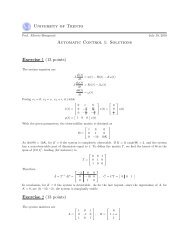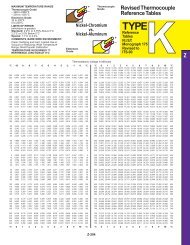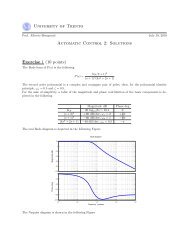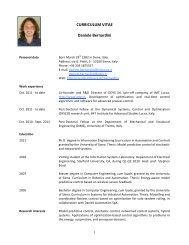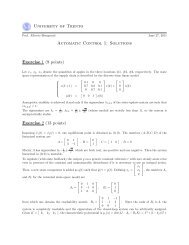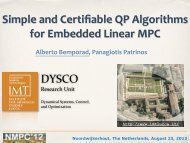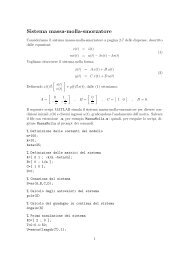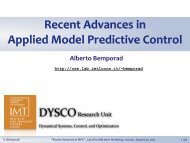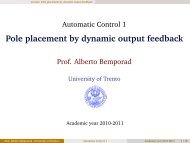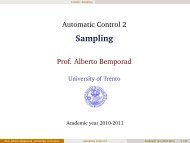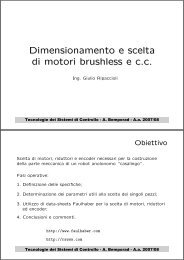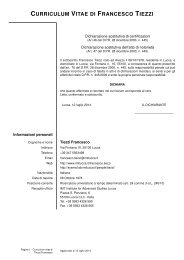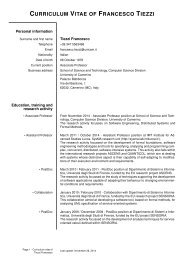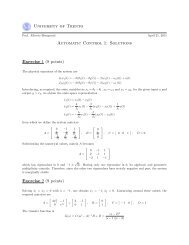Automatic Control 1 - Reachability Analysis
Automatic Control 1 - Reachability Analysis
Automatic Control 1 - Reachability Analysis
- No tags were found...
Create successful ePaper yourself
Turn your PDF publications into a flip-book with our unique Google optimized e-Paper software.
Lecture: <strong>Reachability</strong> <strong>Analysis</strong>Canonical reachability decompositionCanonical reachability decompositionGoal: Make a change of coordinates to separate reachable and unreachablestatesLet rank(R) = n c < n and consider the change of coordinatesT = w nc +1 . . . w n v 1 . . . v ncwhere v 1 , . . . , v nc is a basis of Im(R), and wnc +1, . . . , w n is a completion toobtain a basis of nAs Im(R) is A-invariant (Ax ∈ Im(R) ∀x ∈ Im(R) follows fromCayley-Hamilton theorem), Av i has no components along the basis vectorsw nc +1, . . . , w n . Since T −1 Av i are the new coordinates of Av i , the first n − n ccomponents of T −1 Av i are zeroThe columns of B also have zero components along w nc +1, . . . , w n , becauseIm(B) ⊆ Im(R)In the new coordinates, the system has matrices à = T −1 AT, ˜B = T −1 B e˜C = CT in the canonical reachability form (a.k.a. controllability staircase form) Auc 0 0à =˜B = ˜C = MATLABCA c B uc C c[At,Bt,Ct,Tinv]=c ctrbf(A,B,C)A 21Prof. Alberto Bemporad (University of Trento) <strong>Automatic</strong> <strong>Control</strong> 1 Academic year 2010-2011 13 / 23



